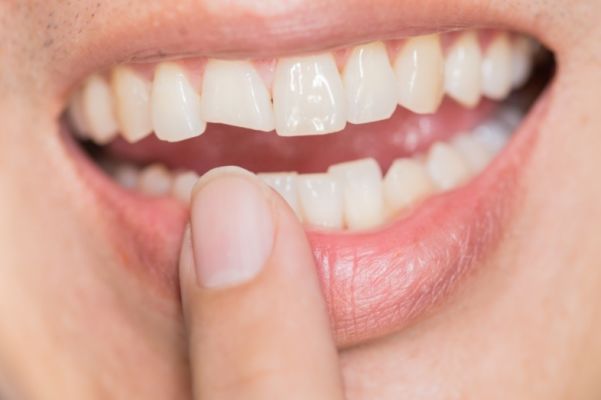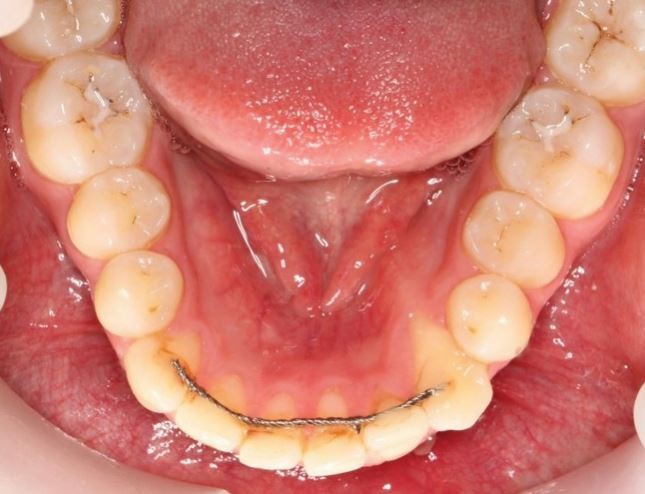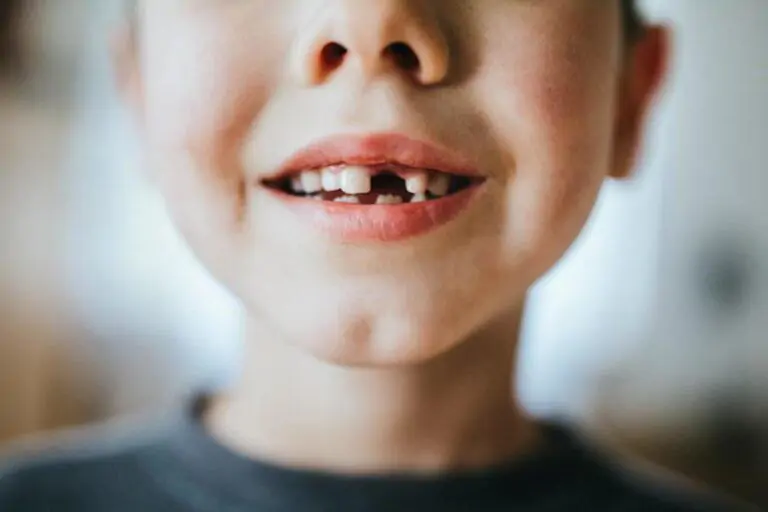Tips on how to handle a mobile tooth in an emergency
There are different types of dental trauma that occur and various ways of handling them.
Sometimes a patient has a chipped tooth, sometimes the patient has a mobile permanent or baby tooth.
Sometimes the permanent tooth is loose and the buccal or lingual plate of the alveolus has broken and is mobile as well. Or the tooth is avulsed.

How to handle these scenarios
So how to handle these scenarios?
First thing is to take an X-ray, take a Panorex. Certainly, if the jaw is broken, you need to refer
this patient to an oral surgeon or to the emergency room.
Chipped tooth
If you see that there’s just a chipped tooth, sometimes if the patient has the piece of the tooth, you can put that piece back with adhesive like Metabond or restore with composite.
Sometimes you may just use a composite filling to restore the tooth, especially if there’s no
exposure of the pulp. You should always check the bite just to make sure the tooth hasn’t been displaced and is interfering with the occlusion

Mobile teeth
In the next scenario, maybe the teeth are mobile.
You might be able to use an orthodontic retainer to splint the teeth, for example you could possibly use a clear Essix tray to help support and hold the teeth together, especially if the patient already has a retainer from orthodontics, they could wear that.
There may be some cases where you want to use a glue to put the teeth together temporarily, but that may be hard to clean offf later.
Again, just make sure that the bite is right. If you see an anterior maxillary incisor displaced to the lingual, and when they close the posterior teeth aren’t touching, go ahead and just gently use your thumb to push those upper incisors and bone labially until the posterior teeth can bite together again.
You may need anesthesia for the patient to help with this procedure. And the ideal situation for any mobile tooth is to splint it orthodontically with orthodontic brackets and flexible nickel titanium wires.
Sometimes you may have a tooth that’s mobile and it’s attached to the buccal plate or the lingual plate and the alveolus is broken and that entire piece of bone is moving with the tooth.

In those cases, you can still do the splint with the orthodontic wires. Sometimes you may see a tooth that’s come completely out of the mouth, and hopefully when that happens the tooth is quickly replaced back into the socket to keep the socket from closing and to keep the ligament hydrated.
If not, hopefully the tooth is placed in some water or some milk until the dentist is quickly seen.
It’s important there’s something there to keep the tooth moist so the ligament around the tooth is preserved until it’s inserted back into the socket.
But as soon as you see the patient, hopefully it’s quickly after it’s happened or the tooth has been kept moist in a bag of water or milk. Then you will replace the tooth back into the socket again.
Ideally this happens in 30 minutes or less of the tooth being avulsed and coming out.
Sometimes the tooth will squirt back out, so the orthodontic wires will help to splint that tooth into place and hold it there.
Broken Jaw
And then finally, if there’s a broken jaw and the bone is broken all the way through, then
you’re not going to be able to splint this with orthodontic wires. You need to refer them for
bone plates and the oral surgeon can see them in the ER.

Orthodontic wire splints
With orthodontic wire splints you want something that’s going to give semi-rigid fixation.
There’s lots of different ways to do that, but one thing that does work well is using a 012 or an 016 size diameter round nickel titanium orthodontic wire, so just keep some of those on hand.
You could have some orthodontic brackets and some orthodontic bonding paste that you can use to glue these on. There’s also little rubber cups that are about the size of a prophy cup that have a mold to make a composite bracket, and sometimes you can etch and bond the tooth and then put composite in this little rubber mold and create a composite bracket on the tooth.
Another idea, it could be possible just to attach the wire directly to the tooth with flowable composite if you didn’t have any bracket to use. But the main thing is center the bracket in the middle of the tooth so that the teeth align straight.
You don’t want a bracket too incisal and another one too gingival, and it’s going to cause the incisal edges to align at different levels.
You really want the brackets to be the same distance from the incisal edge on most of the teeth or in the middle of the tooth.

And ideally, if it’s an anterior mobile tooth, especially an upper incisor or a lower incisor, you
really want to run the wire from canine to canine just to give some stability and some
continuity of the wire there.
Because most of these nickel titanium wires have a shape that fits the curve of the arch.
And so you want to make sure you’re keeping that wire centered in the midline of Teeth # 8 & # 9 so the mark on the middle of the wire aligns at the midline of the incisors.
So just as part of the emergency kit, keep a few orthodontic wires somewhere close by.
Maybe keep something to make an orthodontic bracket or just use some flowable composite directly on the facial of the tooth. But those would be great tools to have for a possible emergency when a tooth is avulsed or mobile.
You could use something like fishing line, but the nickel titanium is ideal with the patient. Always discuss things to expect, especially if it’s in an avulsed tooth, let the patient know the tooth can ankylose and fuse to the bone when the ligament is compromised.
If you have a 12, 13-year-old and the tooth undergoes ankylosis, you may see the gingiva around that incisor appear to rise up higher than the adjacent teeth as the patient grows and the maxilla moves down and forward.
The other incisors adjacent to it, grow down and forward as the patient grows.
For this same reason you don’t place an implant when someone’s 11 or 12 years old and still growing.
Also, it’s important to talk to the patient about the possible need for endo, especially if the
tooth is avulsed. You will want to refer them immediately for endo, and then also talk about
possible resorption of the root in the future, and that it’s something that you’ll watch for
and monitor with X-rays at followup visits.
You’ll have endodontic consults and follow up.

So if you get that call and someone says their tooth is out, remind them, put the tooth in milk or water, put it back in the mouth, or try to reinsert it into the dental socket. There is some salt solution that can hydrate the tooth, but most of your patients aren’t going to have that on hand when an emergency happens.
What to do about a completely avulsed tooth
But most important for a completely avulsed tooth, keep it hydrated and get them in as soon as possible. And this is where time is important. You may be the only person that can help them.
If it’s a 12-year-old that’s lost a central incisor, it’s very difficult to manage that missing space of tooth #8 during the growing years if that tooth is lost.
So it can be a big help for the patient if you can reinsert that tooth and place an orthodontic wire there to splint it for 30 to 60 days, and then remove the wires, and then you can always send the patient to the orthodontist for ortho to align the teeth for any other further treatment.
Our main goal here is just to stabilize the dentition until the bone had a chance to heal around the tooth.


lasuna order online – order lasuna sale buy generic himcolin online
order besifloxacin online – sildamax sale purchase sildamax online cheap
buy neurontin 800mg pill – buy cheap generic nurofen oral sulfasalazine 500mg
probenecid 500 mg cost – how to get tegretol without a prescription carbamazepine 200mg us
order celecoxib 100mg generic – order celecoxib 100mg pill brand indomethacin 50mg
order colospa 135 mg pills – order cilostazol online cheap cilostazol 100 mg usa
diclofenac brand – purchase aspirin sale aspirin 75 mg without prescription
brand rumalaya – buy generic shallaki online amitriptyline 50mg for sale
pyridostigmine 60 mg over the counter – where to buy imuran without a prescription buy azathioprine medication
buy diclofenac pill – order voveran generic nimodipine tablets
baclofen 25mg cost – feldene 20 mg pills feldene 20mg uk
order cyproheptadine 4 mg pills – order tizanidine 2mg online cheap buy tizanidine cheap
buy meloxicam 7.5mg for sale – cheap rizatriptan 10mg buy ketorolac online
buy trihexyphenidyl online cheap – purchase voltaren gel for sale emulgel online buy
buy cefdinir without a prescription – buy cheap generic clindamycin purchase cleocin online
order accutane 10mg generic – generic accutane 40mg buy deltasone 10mg for sale
buy deltasone pills – purchase elimite permethrin price
acticin us – buy permethrin paypal cheap tretinoin cream
betamethasone 20gm without prescription – monobenzone online order monobenzone for sale
how to buy flagyl – order metronidazole for sale cenforce 50mg usa
cheap amoxiclav – cheap generic levoxyl levoxyl usa
buy cheap clindamycin – indomethacin 50mg for sale indomethacin without prescription
cheap cozaar 25mg – hyzaar canada keflex pills
eurax cream – buy eurax sale generic aczone
provigil 200mg tablet – order promethazine sale melatonin 3mg brand
bupropion 150 mg us – buy shuddha guggulu shuddha guggulu canada
order generic xeloda – buy xeloda 500 mg without prescription purchase danazol pills
purchase prometrium pill – buy ponstel no prescription buy generic clomiphene online
buy fosamax for sale – buy generic provera over the counter provera pills
aygestin 5 mg pill – buy aygestin 5mg online cheap buy yasmin generic
dostinex 0.5mg ca – buy generic cabergoline 0.5mg oral alesse
гѓ—гѓ¬гѓ‰гѓ‹гѓі гЃЉгЃ™гЃ™г‚Ѓ – г‚ёг‚№гѓгѓћгѓѓг‚Ї гЃЉгЃ™гЃ™г‚Ѓ г‚ўг‚ёг‚№гѓгѓћг‚¤г‚·гѓі гЃЇйЂљиІ©гЃ§гЃ®иіј